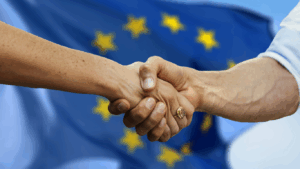Introduction:
The Cultural Sector has always sought to preserve heritage and share art and history. However, with the rise of digital technologies and the implementation of the General Data Protection Regulation (GDPR), institutions face the challenge of balancing the preservation of cultural heritage with respecting the privacy of individuals.
In this blog, we dive deeper into the impact of GDPR on the Cultural Sector and how institutions are adapting to these new regulations.

GDPR: A Brief Reminder
Before we get into the cultural sector, let’s briefly review what GDPR means. GDPR is a European law that aims to protect individuals’ personal data and ensure their privacy. It covers all organizations that process personal data, regardless of sector.
The Unique Challenges of the Cultural Sector.
Digitization of Collections: The cultural sector has invested massively in digitizing archives and collections. However, GDPR requires institutions to be transparent about how they collect, process and store personal data, which adds another layer of complexity to managing digital collections.
Visitor Information and Consent: Museums and cultural institutions often collect visitor information ranging from audio tour data to photographic records. Obtaining consent from individuals for the use of this data now becomes more critical under GDPR, forcing institutions to review their consent procedures.
Research and Privacy: Many cultural institutions are involved in research activities ranging from historical research to artistic analysis. GDPR requires careful balancing between the demands of research and respecting the privacy of those involved.
How the Cultural Sector is Responding
Privacy Policy and Communication: Cultural institutions should create and communicate clear and understandable privacy policy statements to their audiences. This includes being informed about what data is collected, why it is collected and how it is used.
Consent management: Actively obtaining consent for the use of personal data is critical. This means institutions need to think about how they obtain, document and track consent, especially at events or activities where data is captured.
Security and Data Protection: With increased digitization, personal data security has become a priority. Cultural institutions must invest in robust security measures and data protection procedures to meet GDPR requirements.
Conclusion:
GDPR has challenged the Cultural Sector to rethink its approach to data processing, and while this requires adjustments, it also opens doors to a more transparent and responsible handling of personal data. By balancing heritage preservation and privacy protection, cultural institutions can play a valuable role in protecting both the past and the rights of the individual.
Need help getting your GDPR File in order?
Start now with a GDPR Subscription!









